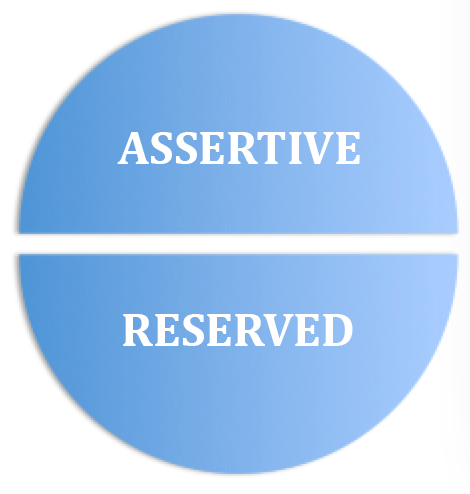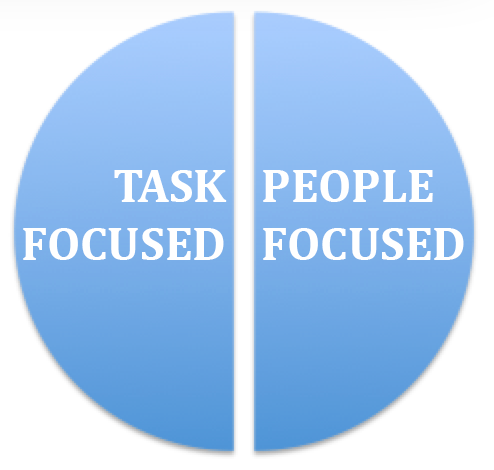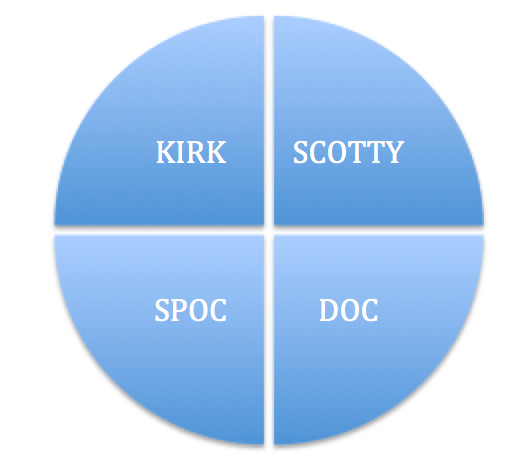Decoding Body Language with DISC
My introduction to DISC was through Manager Tools. Initially their podcasts and then on one of their training courses. For me, DISC was different fromBelbin and MBTI and the like that I had done in the past. While my own detailed profile was the result of similar questionnaires the training from Manager Tools highlighted behaviours that would enable me to determine other people’s DISC tendency without a test. This was something that could be useful. Coupled with advice on how to tailor my own behaviour to suit who I was interacting with it was really powerful and it gives clues for decoding body language.
As someone that has always struggled with decoding body language the training to observe micro-behaviours and group these to predict how someone might react to a particular style was mindblowing. Things as simple as how loud or fast a person talks and how much they wave their hands around can reveal a lot about a person. Unlike traditional approaches to body language (they have crossed their arms, they are bored) you examine 10’d or 100’s of little expressions to spot a pattern. Often we group lots of micro-behaviours together to form an assessment (he’s arrogant, she’s bossy) subconsciously.
A quick DISC Overview
The DISC model assesses people on two axis – people vs task focus and assertive vs reserved. These two axis are overlaid into what would normally be a 2×2 matrix, but as this is the DISC model it is a circle.



D for Dominance is assertive and task focused with an emphasis on results.
I for Influence is assertive and people focused with an emphasis on relationships and influence.
S for Steadiness is reserved and people focused with an emphasis on cooperation.
C for Conscientious is reserved and task focused with an emphasis on quality and accuracy.
Behavioural Diversity
With DISC, as with MBTI and the others, there is no “right” profile. No one profile is better than the others. Some profiles might naturally be better suited to some situations but a behavioural preference does not attest to competence.
Behavioural diversity is a powerful thing and having a range of behavioural types in a team can help it perform better. Just like having a neurodiverse different thinker can. This is a concept not missed by many TV shows which have a nice blend of behavioural types.

Behaviour spotting
The ability to spot behaviours typical to a DISC type is what stands DISC apart from the others in my mind. The slight complication is that behaviours live in a hemisphere (top v bottom, left v right) rather than quadrants. However, as we are spotting collections of behaviours and not trying to deduce anything through a single gesture this is not a problem.
Behaviours can be broken down into verbal (what we say), vocal (how we say it), and visual (the things we do that can be observed). Behaviour spotting is not about seeing a single behaviour it is about seeing an aggregation of lots of little behaviours.
Verbal behaviours: in the left side of the model you have people who talk about tasks and refer to people by their position (e.g. the CEO rather than Bob). On the right side are people who talk about people and use names. In the top of the model, people tend to tell more than ask. In the bottom people ask rather than tell.
Vocal behaviours: People on the left are short to the point talking about the what and supported by data. People on the right tend to talk more and use stories and discuss the who. People on the top talk fast and loud and will interrupt to make their point. People on the bottom talk slower with a softer tone and will pause before speaking.
Visual behaviours: People on the top of the model tend to make big gestures and will make eye contact. People on the bottom make smaller gestures and do not make much eye contact. On the left people smile less than those on the right.
Behaviour spotting in meetings
Next time you are in a dull meeting where there is little value for you but you can’t escape, why not try behaviour spotting? Pick a couple of people opposite you and watch them. Can you start counting behaviours that are predominantly top or bottom, left or right? Can you count 20 behaviours? 50? Is there enough groupings of behaviour to identify a task or a people focused person? Or to identify assertive vs reserved tendencies?
How this helps
The more you practice this in meetings the better you get a spotting behaviours in different contexts. You can start to notice differences in behaviour between different people and then relate this back to the model. If you keep a watch on key people you can also start to spot changes in their behaviour which can be useful insights.
The fist bit of advice I got on understanding body language was to watch Sergio Leone movies (he was the inventor of the “Spaghetti Western”) with the sound off and try and work out what is going on. It was useful to a point but did not easily transfer into a work context. I also found that watching behaviours as a spectator (of a movie or in a meeting) is a lot easier than doing it in real time while having a conversation.
Using otherwise unproductive time in meetings to spot specific behaviours starts to build your body language decoding skills ready for use in different context. You can observe meetings (at work or in a coffee shop) and tune out the content and tune into the context: who is being assertive and who is being reserved. Can you work out how is Spock and who is Kirk (for those that watched Star Trek)? More importantly, if that is they typical style what might it mean for how best to communicate with them?
Tailoring with DISC
When you have a reasonable idea of someone’s behavioural tendencies through decoding their body language you can start to tailor your behaviour to better communicate with them. It also offers insights as to why some of your behaviours might irritate others. Assertive people (D and I) tend not to mind if you interrupt but reserved people might get annoyed (C) or offended (S). Shifting your behaviours slightly closer to the person you are talking to, for example talking faster or slower, will result in more effective communication.
If you are talking with a D they are going to want short to the point conversations based on facts around progress towards goals, they want to know things are on track and if not what will be done to fix them. A more I character might want a bit of a laugh and a joke and is more likely to be motivated by exciting opportunities. An S will want to know the people side of things is being considered. A C will want data, lots of data, they will want to know all the facts have been considered and checked. And double checked.


Pingback: Understanding DiSC Styles Through Body Language: Insights from Equine Assisted Learning